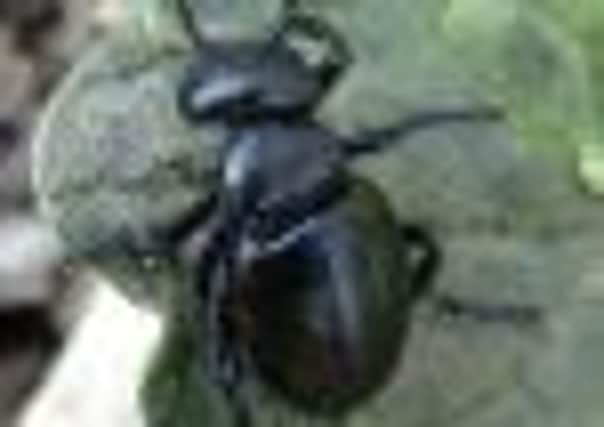Tread carefully as crunch time for beetles sparks bug hunt


Conservationists are asking the public to take part in the UK’s first survey of the oil beetle. There used to be eight species – so-called because they produce toxic oily secretions as a defence against predators – thriving in sandy soil, on wildflower-rich grassland, heaths, moorland and coastal areas.
Much of their habitat is being lost, and the beetle is disappearing too, say experts. There are now only four species left – the black, violet, rugged and short-necked varieties.
Advertisement
Hide AdAdvertisement
Hide AdFewer and fewer sightings of oil beetles have been reported to wildlife conservation groups, but it is known that four kinds have died out in the last 100 years.
They are normally seen between March and June, and beetle fans have gone so far as to describe them as one of our most charismatic insects and “an icon of our wildflower grasslands”.
Because pregnant females like to dig their burrows on bare ground to lay around 1,000 eggs at once, they can be spotted lumbering across footpaths. Unsuspecting walkers can easily and accidentally wreak havoc, killing not only a mother but the eggs she is about to unload.
“The oil beetle’s life cycle is closely associated with wild, solitary bees which nest in cliff faces or places where they can burrow into sandy soil,” says Dale Harrison of the conservation charity Buglife, which has teamed up with the National Trust, Government agency Natural England and Oxford University’s Museum of History to carry out the survey that will help to find the four remaining species.
Advertisement
Hide AdAdvertisement
Hide Ad“The eggs hatch as long-legged, three-clawed larvae, which climb up the stems of flowers onto the petals to wait for the arrival of the wild bees. They then hitch a ride on the back of the bee to its nest, where they change into maggot-like creatures and devour the bee’s eggs and pollen stores, before going through various further changes and emerging as adult beetles the following spring.”
No-one has managed to document all the mysteries of the oil beetle’s behaviour while inside a bee’s nest and the beetles have been hit by the reduction in the wild bee population due to loss of habitat. Fewer and fewer sightings of the oil beetle have been reported by enthusiasts to wildlife conservation groups.
The black oil beetle and violet oil beetle have been seen at various locations in Yorkshire in the past, but the last records were 10 years ago, says Ms Harrison.
“Fifty years ago there were various records for these beetles, so we would be very interested to get people looking in Yorkshire to help us find out what is going on. The county has great habitats available, so they could still be there.
Advertisement
Hide AdAdvertisement
Hide Ad“People can also help the oil beetle by doing anything they can to encourage bees, such as creating a wildflower garden,” says Dale Harrison. “They are glorious insects, and we need a lot more information to understand them.”
People can take part in the survey by uploading photographs of beetles and information about where they were sighted onto the Buglife website www.buglife.org.uk